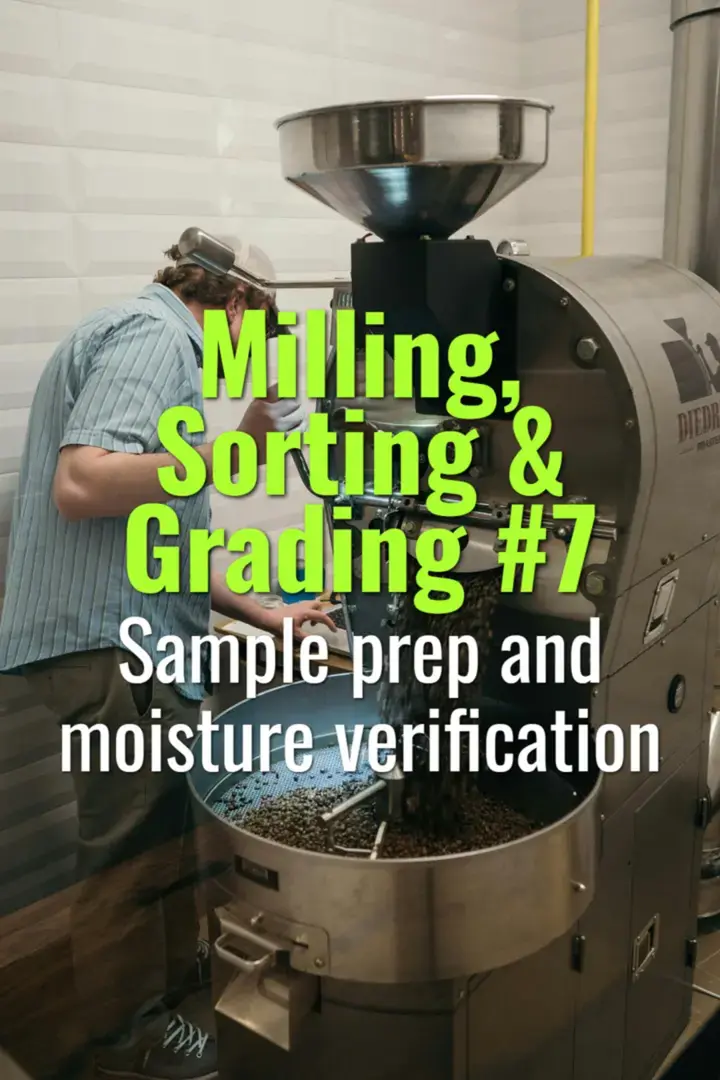Sample prep and moisture verification
This topic explains how coffee samples are prepared for analysis during milling and how moisture verification ensures beans meet quality and safety standards before export or roasting.
- Coffee Basics Nerds
- 2 min read
Article 7 of 12 in Milling, Sorting & Grading/

Why Sample Prep Matters
- Coffee is graded and cupped based on representative samples.
- Proper sample prep ensures fairness and accuracy in evaluating lots.
- Buyers and producers rely on standardized procedures for quality assurance.
Steps in Sample Preparation
- Sampling: Collect beans from different areas of the lot (top, middle, bottom, multiple bags).
- Weighing: Standard sample size = 350g green coffee for SCA protocols.
- Visual Sorting: Remove visible foreign matter and note defects.
- Screen & Density Testing: Determine bean size distribution and density classification.
- Cupping Roast Prep: Roast small test batches to evaluate flavor.
Moisture Verification
- Target: 10–12% moisture content for stability.
- Tools: Handheld moisture meters or lab-grade analyzers.
- Process:
- Test multiple sub-samples to avoid bias.
- Ensure meters are calibrated for coffee.
- Water Activity (a-w): 0.55–0.65 range confirms microbial safety.
Why Verification is Critical
- Over-dried (<10%): Brittle beans, flat or papery flavor.
- Under-dried (>12%): Risk of mold, mycotoxins, and rejections.
- Uneven moisture: Leads to inconsistent roasting and flavor variation.
Integration with Quality Control
- Moisture results logged alongside screen size, density, and defect counts.
- Combined data informs final grading and contract documentation.
Best Practices
- Always mix sub-samples before testing.
- Use both moisture % and a-w for accuracy.
- Pair lab results with sensory cupping feedback.
Lasting Importance
Sample prep and moisture verification are foundation steps in quality assurance during milling. They provide objective, measurable benchmarks that protect cup quality, ensure safety, and build buyer confidence in every exported lot.
You might also like:
- Tags:
- Lasting Importance
- Green Coffee
- Best Practices
- Cup Quality
- Quality Control
- Matters Coffee
- Coffee Water
- Moisture Content
- Water Activity
- Screen Size
- Size Distribution
- Defect Counts
- Cupping Feedback
- Risk Mold
- Quality Assurance
- Moisture Meters
- Target Moisture
- Bean Size
- Size Density
- Foreign Matter
- Sorting Remove
- Buyers Producers
- Leads Inconsistent
- Uneven Moisture
- Buyer Confidence
- Sensory Cupping